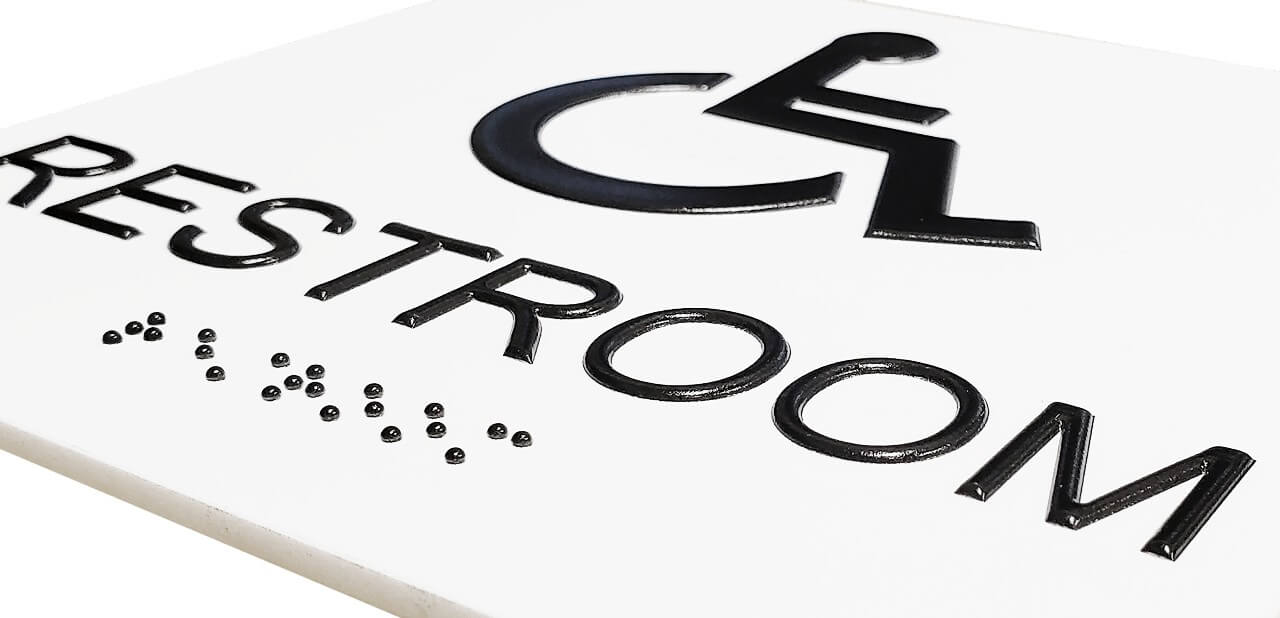Tactile and Braille signage are both forms of signage designed to provide information to individuals with visual impairments, but they serve slightly different purposes.
Tactile Signage:
General Description: Tactile signage refers to signs that have raised, textured, or embossed elements that can be touched and felt by hand. These signs use different textures, shapes, and symbols to convey information.
Materials: Tactile signs can be made from various materials, including metal, plastic, or wood. The key is that they have a tactile element that can be sensed through touch.
Usage: Tactile signage is not limited to Braille users. It is used to provide information through touch for people with visual impairments who may not read Braille.
Braille Signage:
General Description: Braille signage specifically incorporates the use of the Braille writing system, a tactile writing system used by people who are visually impaired. It consists of raised dots arranged in a grid, with each grid representing a letter or a combination of letters.
Materials: Braille signage typically includes both visual and tactile elements. The Braille characters are embossed or raised, allowing individuals to read them by touch.
Usage: Braille signage is primarily designed for individuals who are proficient in reading Braille. It provides a means for blind or visually impaired individuals to access information independently.
Key Differences:
Audience:
Tactile signage caters to a broader audience, including those who may not be Braille readers but still benefit from tactile information.
Braille signage specifically targets individuals who are proficient in reading Braille.
Content:
Tactile signage conveys information through various tactile elements, such as raised symbols, textures, or shapes.
Braille signage incorporates the Braille writing system to represent letters, numbers, and words in a tactile format.
Design and Materials:
Tactile signage can be made from a variety of materials and may use different tactile features beyond Braille.
Braille signage includes the use of Braille characters, typically embossed or raised on the sign, and may also include accompanying visual information.
In many cases, signage designed for individuals with visual impairments combines tactile elements with Braille to ensure accessibility for a wider range of users. The goal is to provide inclusive information that can be understood through touch, catering to the diverse needs of people with visual impairments.
EPM Print Group, as a long term, local Queensland business and market leading print solutions agency, can assist with brand management and growth right across Australia. If your business would like to be supported by a professional, reliable, cost effective business solution, reach out to our team at sales@epmprint.com.au


No comments yet.